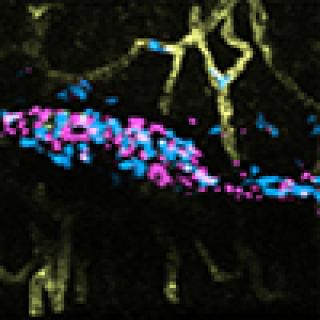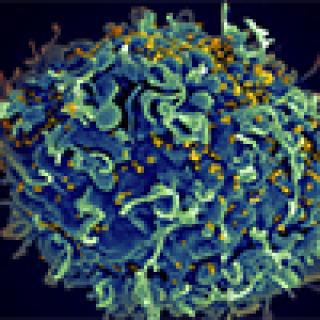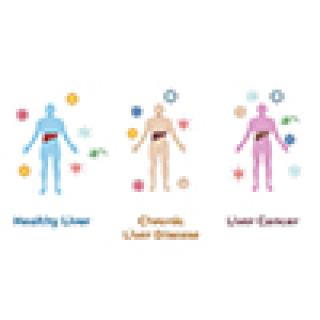Our Discoveries
Innovative imaging tools reveal how neutrophils fight inflammation in mice
CCR researchers used state-of-the-art imaging techniques to observe, in real time, the path neutrophils take as they move toward a site of inflammation in a mouse model. The images showed the neutrophils leaving the blood vessels and engaging with bacteria that had been introduced into the mouse’s footpad. These observations led to the team’s discovery that the leukocyte LTB4 directs the recruitment, engagement, and penetration of neutrophils into inflamed tissues.
Read MoreFDA grants rare pediatric disease designation for experimental immunotherapy for acute lymphoblastic leukemia
A cell-based immunotherapy that is currently being evaluated at the NIH Clinical Center for the treatment of B-cell acute lymphoblastic leukemia (ALL) has been designated by the U.S. Food and Drug Administration as a drug for a rare pediatric disease. Designation could encourage development of this novel therapy for children with relapsed or refractory ALL.
Read MoreIn mice, new therapeutic strategy enhances the effects of immunotherapy in high ASS1-expressing cancers
Many prevalent cancers (e.g., lung, breast and colon) exhibit abnormally high expression of the enzyme ASS1. This results in greater production of genetic material incorporating purines, consequently making these tumors more resistant to immunotherapy. The researchers showed that drugs blocking purine production in these tumors enhance their response to immunotherapy.
Read MoreExperimental compound blocks SARS-CoV-2’s ability to infect and kill cells in the lab
A potential therapy for COVID-19 binds to a viral enzyme that SARS-CoV-2 requires for replication. With further development and testing, it might be an effective treatment for people with the disease.
Read MoreEpigenetic marker contributes to PARP inhibitor resistance
CCR scientists have discovered a way cancer cells can become resistant to PARP inhibitors, targeted therapies that are used to treat some ovarian, breast and prostate cancers.
Read MoreNew synthetic compounds alter RNA expression in bacteria
Researchers have succeeded in developing a number of different compounds that bind to ZTP riboswitches, which regulate RNA, in bacteria. Their approach could one day be used to create a new class of antibacterial drug.
Read MoreTrial shows aggressive cancer treatment is appropriate for people with HIV-associated primary central nervous system lymphoma
New research from CCR scientists shows that chemoimmunotherapy with antiretroviral therapy can lead to long-lasting remissions of HIV-associated primary central nervous system lymphoma without compromising neurocognitive function.
Read MoreStudy finds drug beneficial for shrinking mesothelioma tumors
A drug that is designed to boost the immune system against mesothelioma, when combined with immunotherapy, was found to be beneficial in a small study involving ten patients. The results suggest that the drug LMB-100 could prolong the life of some patients with advanced disease.
Read MoreNew chemical sequencing reaction helps unravel the role of an ancient RNA modification
CCR researchers and collaborators have developed a novel chemical reaction that enables the quantitative mapping of an ancient and enigmatic RNA modification that is found in nearly all organisms on earth, providing fundamental insights that are potentially important for tumor biology and cancer treatment.
Read MoreCCR scientists develop new blood test that may improve liver cancer screening
Scientists led by Xin Wei Wang, Ph.D., Deputy Chief of the Laboratory of Human Carcinogenesis, have developed a new test that can identify people who are likely to develop hepatocellular carcinoma (HCC), the most common form of liver cancer. The approach uses a simple blood test to check for the patient’s previous exposure to certain viruses. “Together with existing screening tests, the new test could play an important role in screening people who are at risk for developing HCC. It could help doctors find and treat HCC early. The method is relatively simple and inexpensive, and it only requires a small amount of blood,” he says.
Read More








